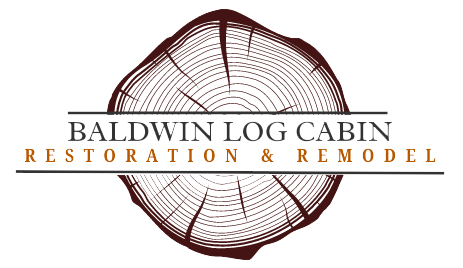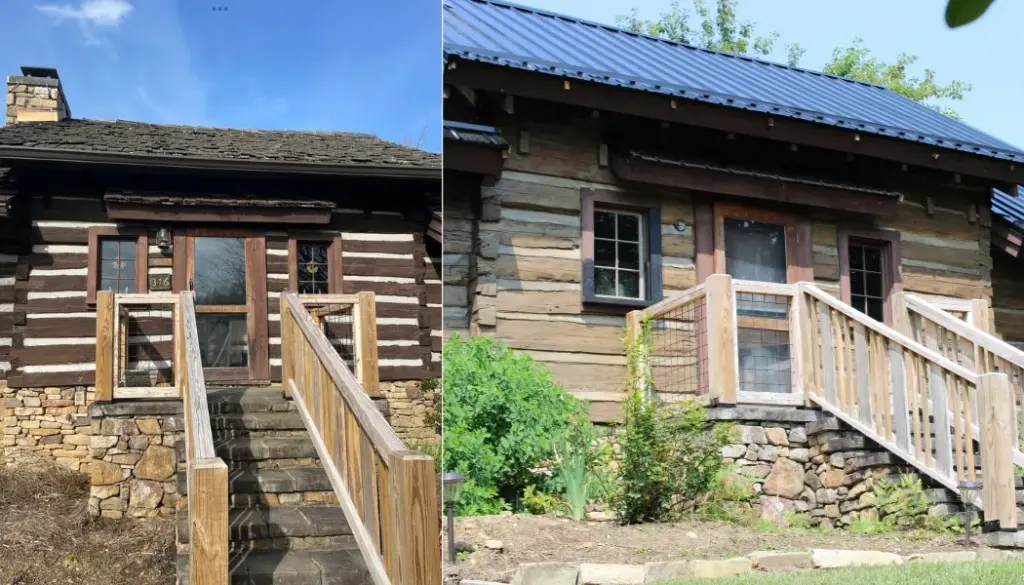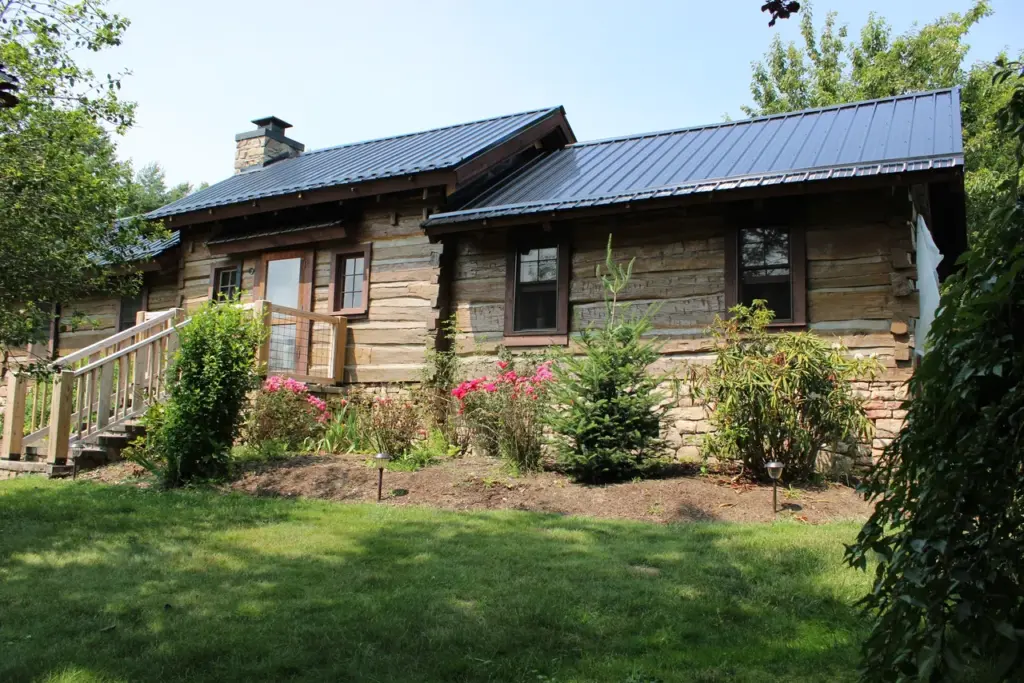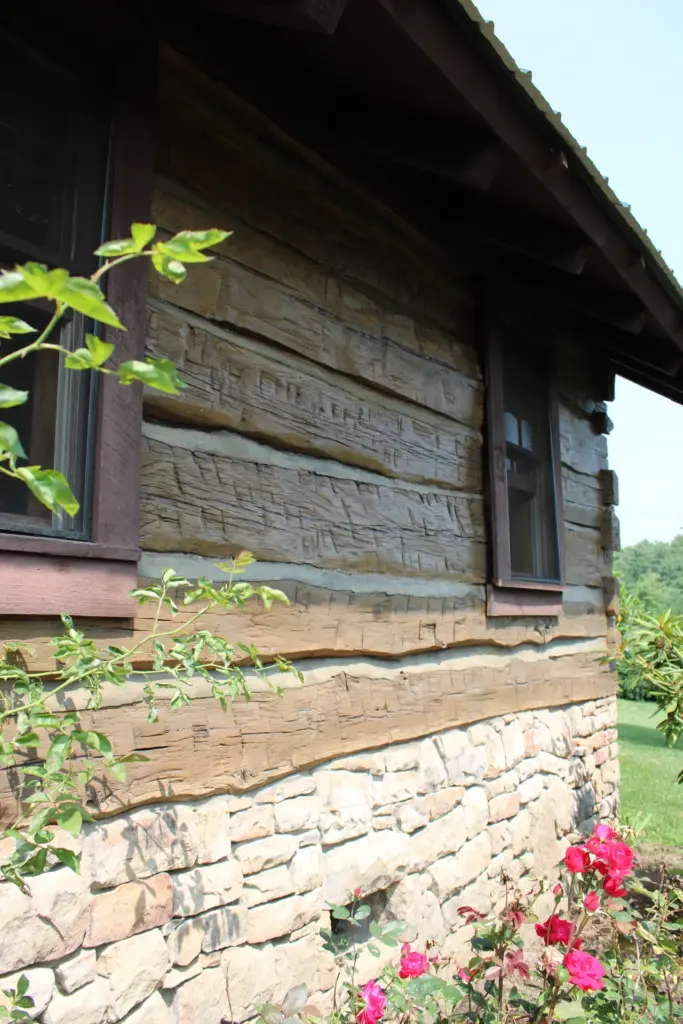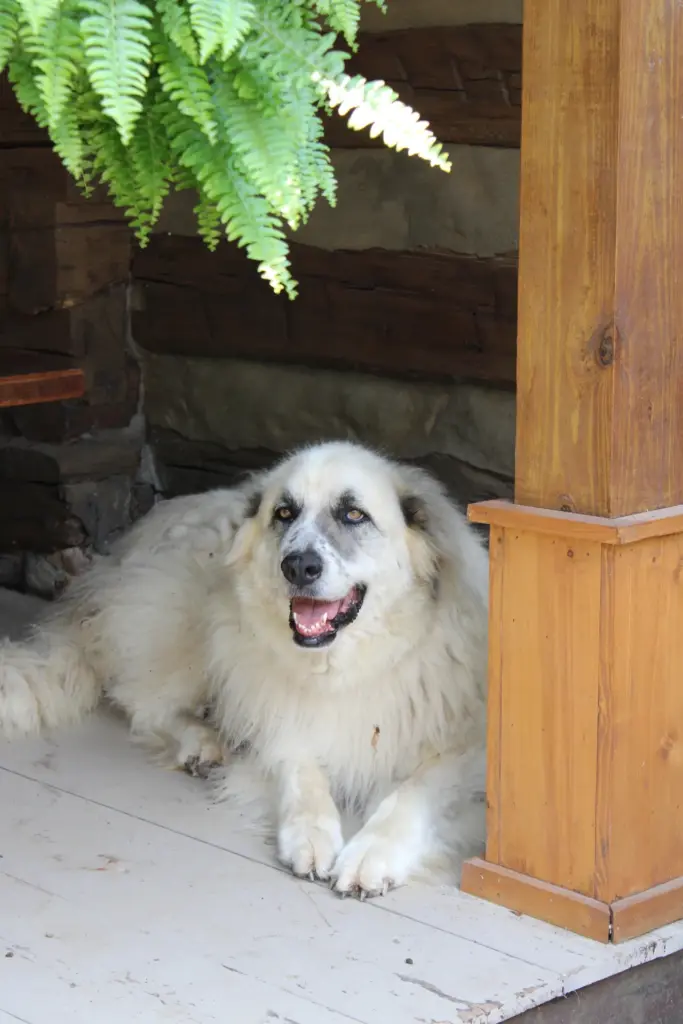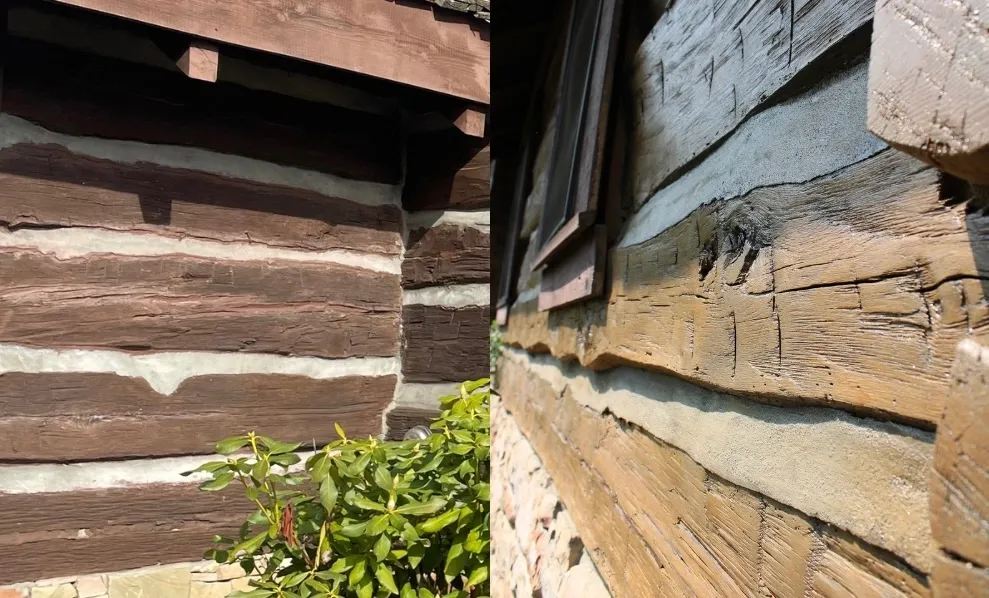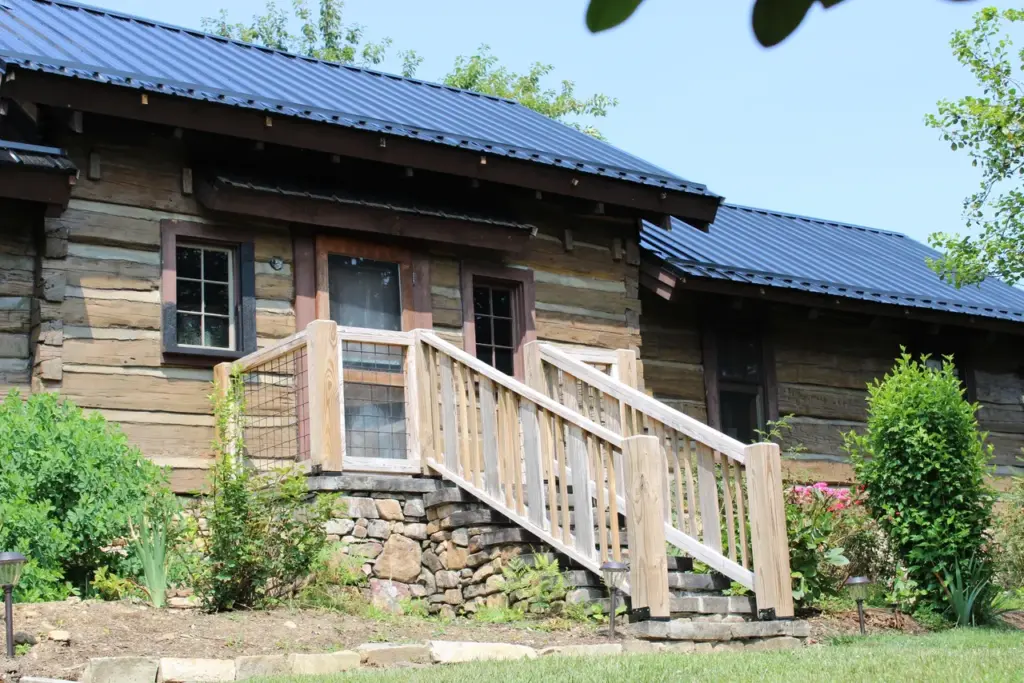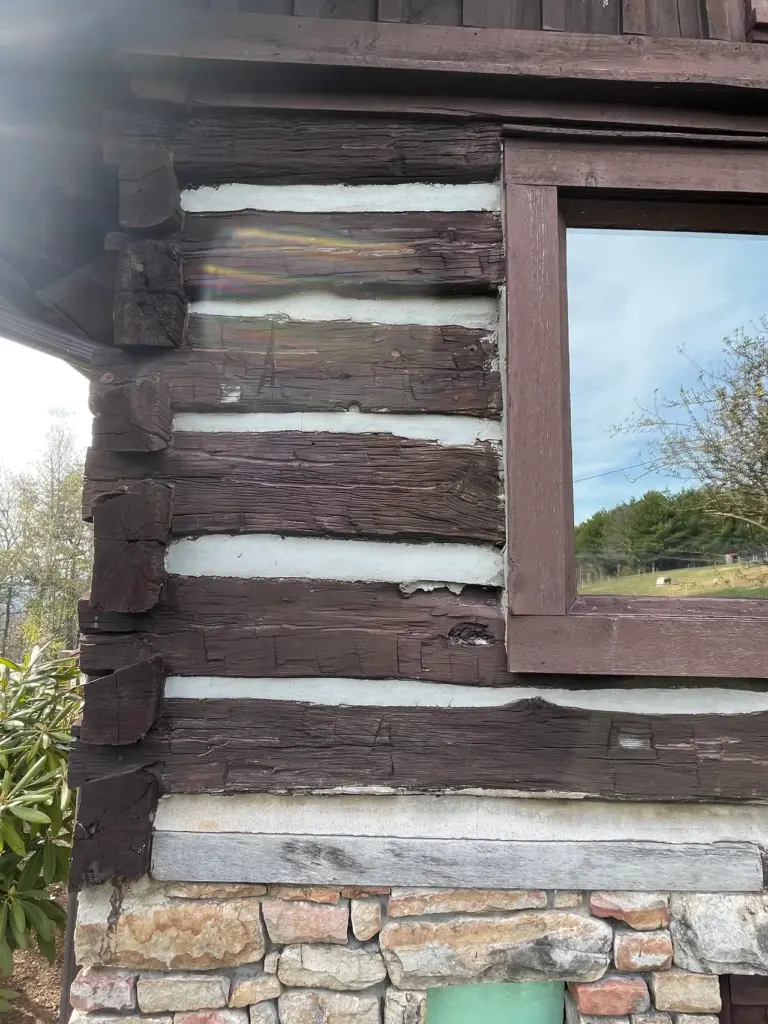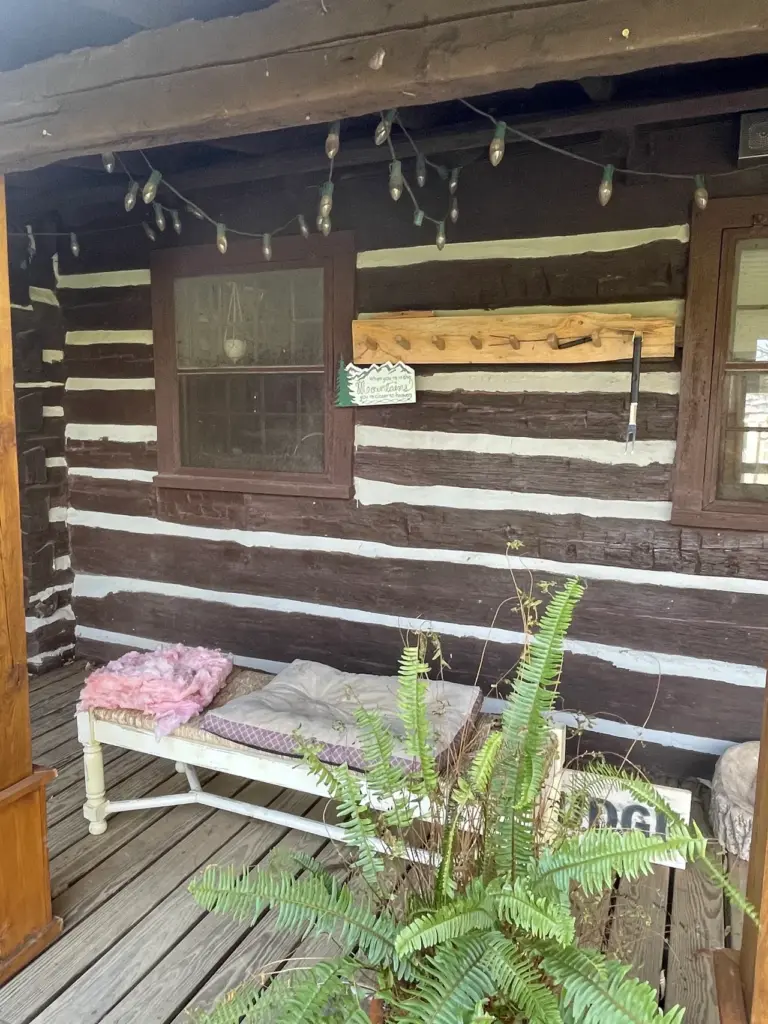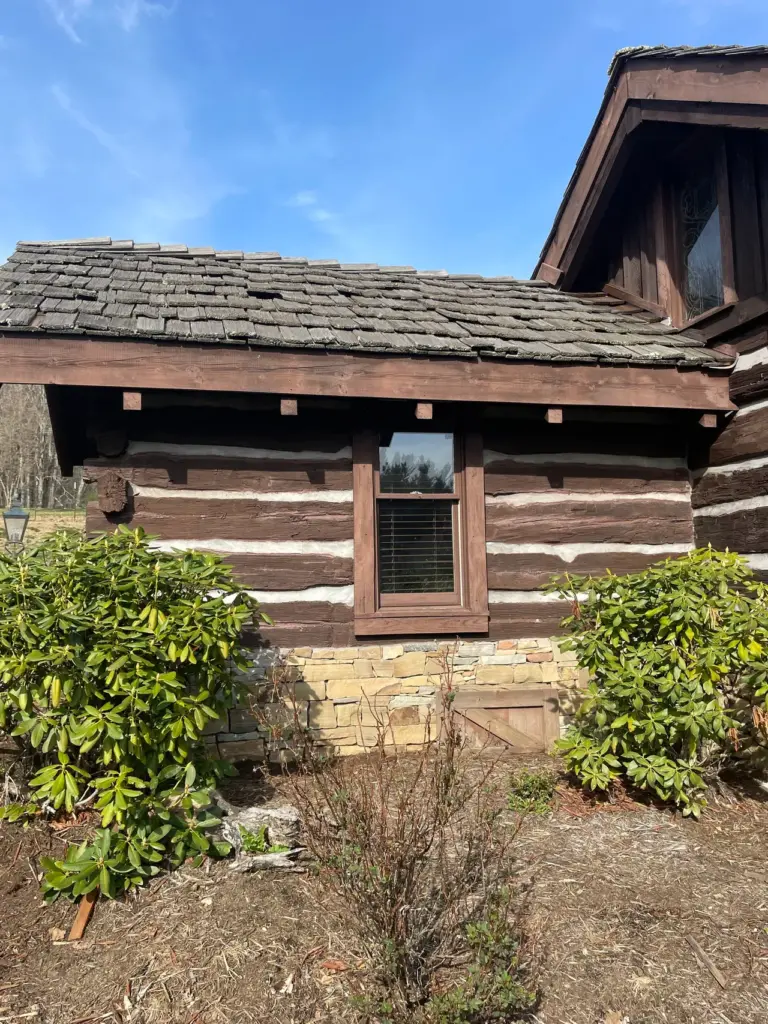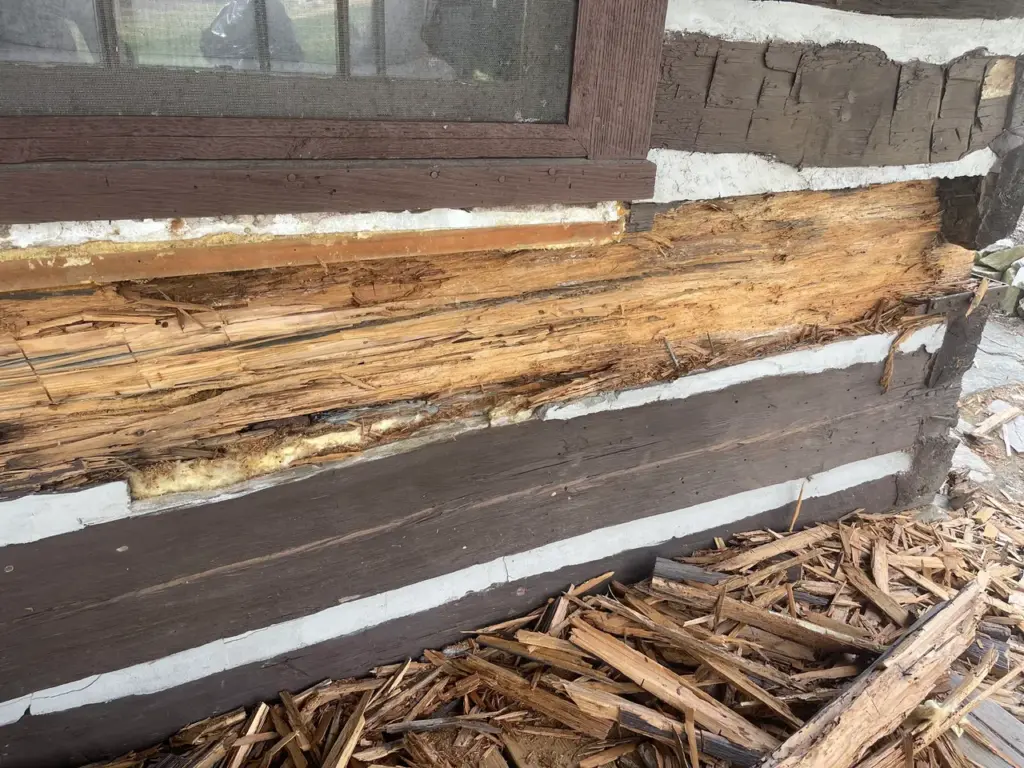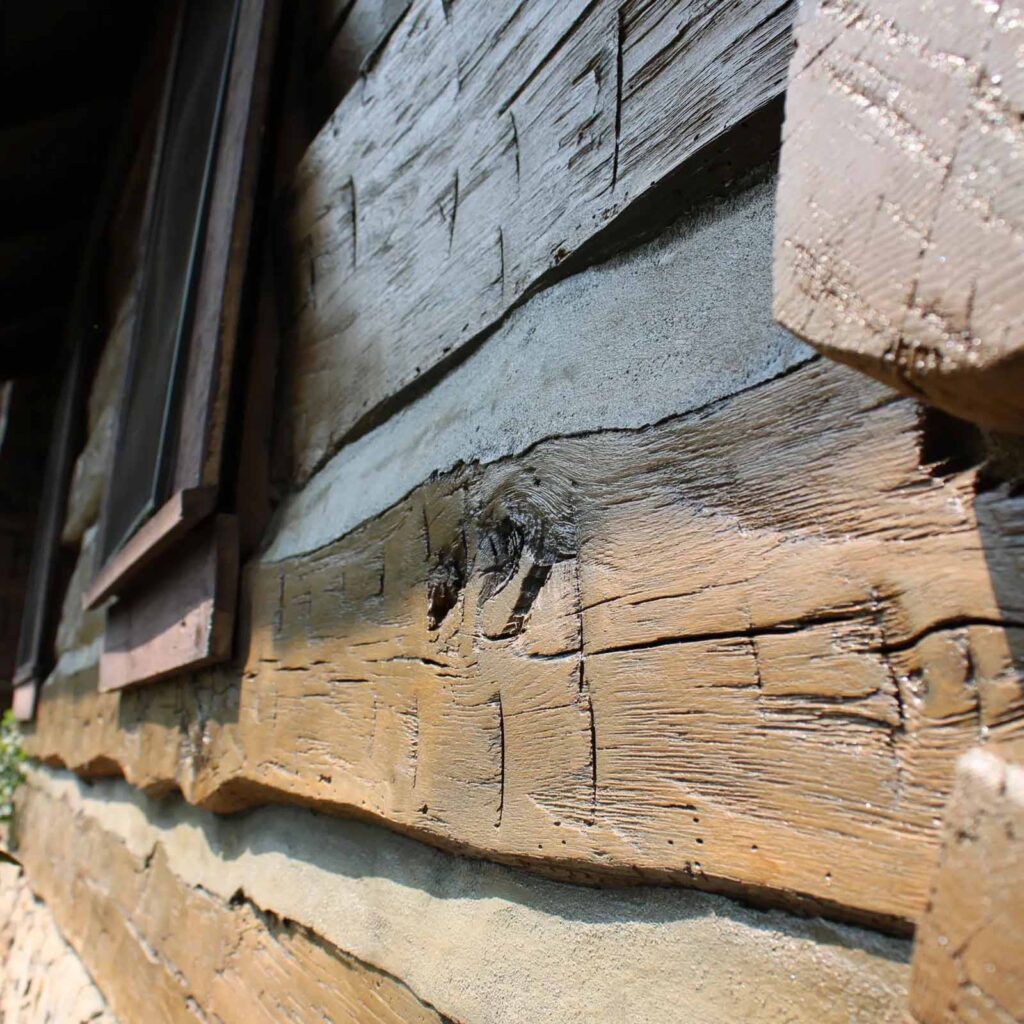This beautiful log home located in Newland, NC is full of rustic charm. Nestled in the heart of the North Carolina mountains, it was one of the most stunning properties we’ve seen. However, when it came to the cabin… Like any aging structure, it required some upkeep and restoration. The old chink, a concrete material used to fill gaps between the logs, was showing signs of wear and separation from the wood—breaking a proper seal.
Chink is an essential defender against rot. It’s important to make sure your chink is in good condition and, if necessary, to replace it entirely. In this case, our client wanted the most cost effective solution. Keeping the chink. The chink being old, cracked concrete it was important to seal it properly to prevent any further damage. Keeping the chink was cost effective because removing it meant possibly removing some logs in the process.
Proper sealing is necessary to prevent moisture from entering the log through cracks, broken chink, and checks (splits in the logs). So we chinked where necessary and sealed it all up.
Identifying and understanding checks in logs is crucial. Checks are cracks that occur naturally in logs as they age, which can lead to problems such as rot and water damage. Before starting, it’s essential to inspect the logs and fill any checks with a seal to prevent further damage. Our Client was up to some DIY chinking and sealing for money-saving. So with some demonstration, help, and material, our client was able to DIY some of the steps.
Because our client wanted to keep the chink, staining was the last step in restoration. We blasted away that nasty semi-solid stain to get to the natural wood. Sanded the logs down, and removed any rot.
